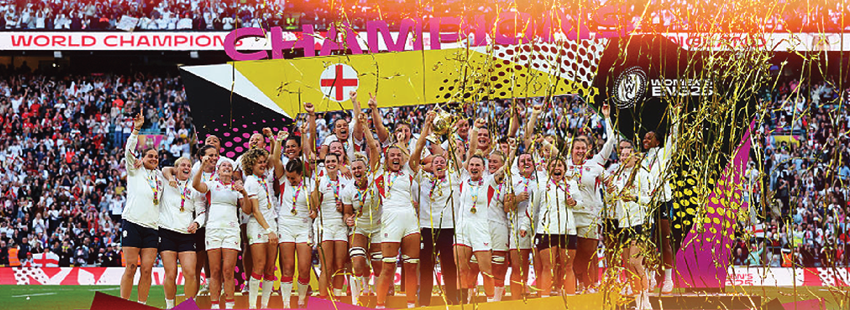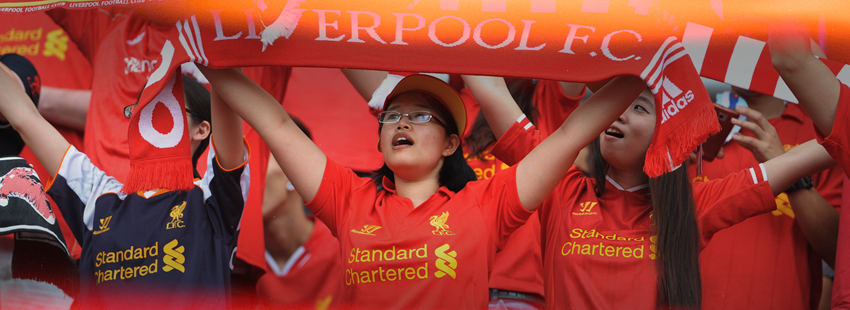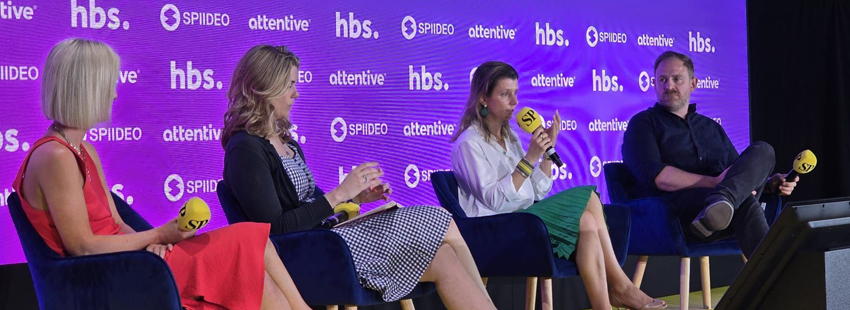rEvolution’s Katie Wallis on how this era-defining tournament represents a new playbook for women’s sports.
rEvolution’s Katie Wallis is no stranger to the world of rugby. Having played Rugby Union since the age of 10, Katie knows all too well what it’s like being told the game ‘wasn’t for women.’ Still playing Rugby League for the London Broncos, in the second highest division in the country, Katie’s passion for the sport, and for all women’s sport, is stronger than ever.
The Women’s Rugby World Cup 2025 was more than a sporting spectacle—it was a cultural milestone. Staged in England from 22nd August to 27th September, the tournament set new benchmarks for scale, visibility and impact. For the first time, 16 nations battled it out across 32 matches, bringing fresh rivalries and inspiring new fans worldwide. A jaw-dropping 444,465 tickets were sold for the tournament, purchased by fans in 133 countries. A number that is well over three times the culminative attendance of the 2021 edition (played in 2022). The final at Twickenham, where England’s Red Roses defeated Canada in front of 81,885 fans was the largest crowd in women’s rugby history. For context, when the WRWC operating committee in 2020 set a target to fill Twickenham Stadium, the average attendance to an England game was just 5,000. The tournament peaked broadcast interest too, reaching 8.5 million viewers in the UK. With the Final reaching a 5.8m peak audience on the BBC, making it the most-watched women’s rugby union match ever on UK television, and the most-watched rugby match of the year (above the Six Nations and the British & Irish Lions).
These numbers tell a powerful story: women’s rugby is here as a global force. But the tournament’s real legacy lies in the way that it has redefined what sport can mean for culture, brands and communities.
One of the most striking lessons was evident in the way culture became currency. Campaigns that moved beyond sport by tapping into identity, music and fashion, connected authentically with new audiences. England collaborated with cultural icons the Spice Girls and Barbie to show off “Girl Power.” Speaking directly to a pressing issue—girls disengage from sport during their teenage years due to body confidence and lack of role models—the initiative showcased how players and aspiring players can be represented any way they wish. Asahi Super Dry’s “Rugby Like Never Before” campaign spotlighted stars like Ellie Kildunne, community collectives such as Black Girls Ruck, while launching The Asahi Open Arms venue, a vibrant, fan-first venue in the heart of London to bring fans together. Their Pub Pledge Finder platform improved visibility and accessibility to the broadcasted matches, by promoting pubs who pledged to televise the games in the UK – removing access to the games as a barrier to growing fandom.
Storytelling and identity also played a pivotal role. O2’s “England, Meet England” campaign elevated the Red Roses to the status of national icons, using cinematic storytelling to build the team narrative of pride and belonging. Meanwhile, Rugby Canada’s “Mission: Win the Rugby World Cup” fundraising campaign, though operating outside official partnerships, captured global admiration by showing their resilience, determination and ultimate tournament success, despite operating on limited resources. These examples demonstrate that when campaigns are rooted in identity and belonging, they transcend marketing to become movements.
The experience for fans was equally critical. Gallagher’s “Game Moment,” a unique activation giving young fans the chance of delivering the match ball, Defender’s mascot programme and O2’s flag bearer initiative gave fans participatory roles. Fans, especially young people, were placed at the heart of the action with these once in a lifetime rugby inspiring moments. With the tournament’s city centre fan zones turning England’s cities into rugby hubs for both attending match day fans, and the general public.
The tournament provided the perfect spotlight for the athletes themselves to take centre stage. The World Cup showcased not only brilliant rugby but also the personalities of players. Social storytelling, individuality, and authentic voices drove engagement, with players generating over 219 million views and growing their followings by a third on average. Stars like Kildunne, Sophie de Goede, and the creative and crocheting Abby Dow became household names because fans connected with them as people, not just athletes. Joining the likes of Ilona Maher as global stars to be engaged with.
A report by Parity and Survey Monkey confirms the opportunity here: women’s sports fans are nearly three times more likely to purchase a product recommended by a female athlete than by other types of influencers. Letting athletes lead is not just good for engagement—it is good for business.
What this tournament ultimately demonstrated is a new playbook for women’s sport. It showed that women’s rugby can fill the biggest stadiums, break broadcast records, inspire young people, and create global icons. More importantly, it highlighted that women’s sport is not niche—it’s a growth engine, a cultural force, and a space where authentic storytelling and fan-fist experiences can transform perception and unlock commercial potential.
The Women’s Rugby World Cup 2025 will be remembered not only for England’s Red Roses lifting the trophy, but as a moment the game itself went stratospheric. Women’s rugby has moved on from the default of ‘shrink it and pink it’ and is now carving its own identity and fandom. For brands, unions, and investors, the lesson is clear: the future of sport is being written now, and those who act with authenticity and imagination will help shape it.



